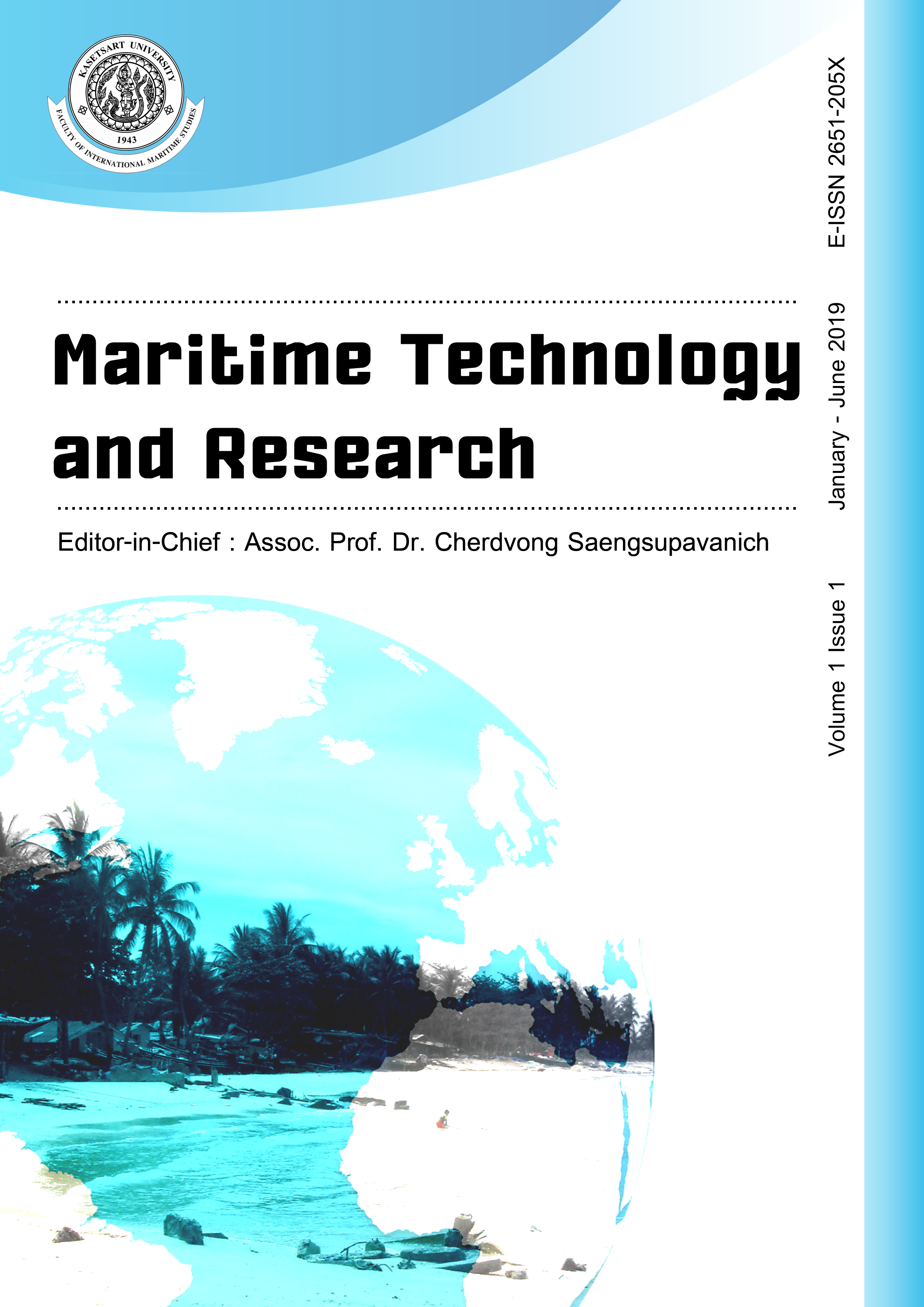An evaluation of a new offshore breakwater at Sattahip Port, Thailand
DOI:
https://doi.org/10.33175/mtr.2019.139185Keywords:
Offshore breakwater, Coastal engineering, Port, Wave attenuation, Numerical simulationAbstract
Careful planning for a port development is vital. Offshore breakwater is known to reduce wave height approaching a port, but it is not always the case. Different ports have different characteristics. This article chose to analyse Sattahip Port. Necessary information, such as annual wave climate, long-term tidal records, and a bathymetric map were collected and synthesized. Numerical simulations were carried out by the MIKE21 PMS software package. The simulation results showed that the existing breakwater at the port could only protect some parts of it. If the whole area of the port were to be sheltered, a new offshore breakwater would have to be installed at a certain location. The existing breakwater could not be extended because it would interfere with the existing navigational channel. A new breakwater at the nearest island was another option, but it was proven by the simulation results that the new breakwater could not reduce the wave height as planned. If the wave simulation had not been undertaken, decision makers might have proceeded in the wrong direction, and millions of dollars would have been wasted.
References
Bruce, T., van der Meer, J. W., Franco, L., & Pearson, J. M. (2009). Overtopping performance of different armour units for rubble mound breakwaters. Coastal Engineering 56(2), 166-179. doi:10.1016/j.coastaleng.2008.03.015
DHI. (2018). Retrieved from https://www.mikepoweredbydhi.com
GEBCO (2018). Retrieved from https://www.gebco.net
Guler, H. G., Arikawa, T., Oei, T., & Yalciner, A. C. (2015). Performance of rubble mound breakwaters under tsunami attack, a case study: Haydarpasa Port, Istanbul, Turkey. Coastal Engineering 104, 43-53. doi:10.1016/j.coastaleng.2015.07.007
Jakobsen, P. R., Broker, I., Jensen, J. H., Skou, A., & Poulin, S. (1998). Thyboron barriers: A mastercase of coastal engineering. Coastal Engineering Proceedings 26, 1516-1529.
Kamphuis, J. W. (2000). Introduction to Coastal Engineering and Management. Advanced Series on Ocean Engineering, World Scientific, Singapore. doi:10.1142/4064
Saengsupavanich, C. (2013). Erosion protection options of a muddy coastline in Thailand: Stakeholders’ shared responsibilities. Ocean & Coastal Management 83, 81-90. doi:10.1016/j.ocecoaman.2013.02.002
Schelfn, T. E., & Östergaard, C. (1995). The vessel in port: Mooring problems. Marine Structures 8(5), 451-479. doi:10.1016/0951-8339(95)97304-Q
Simeoni, U., Corbau, C., & Letizia, P. (2009). Evolution of geminations along the Goro Spit: First results. Journal of Coastal Research 56, 123-127.
Sloth, P., Fuchs, J., Kofoed-Hansen, H., Mortensen, S. B., & Mühlestein, D. (2012). Wave transformation and overtopping challenges solved by multi-disciplinary modelling. Proceedings of the 8th International Conference on Coastal and Port Engineering in Developing Countries, Chennai, India.
Sorourian, S., & Banijamali, B. (2010). A case study of hydrodynamic and morphological modeling of a re-migrating inlet. Coastal Engineering 2010, 1-13. doi:10.9753/icce.v32.sediment.90
Tsujimoto, M., & Orihara, H. (2019). Performance prediction of full-scale ship and analysis by means of on-board monitoring (Part 1 ship performance prediction in actual seas). Journal of Marine Science and Technology 24(1), 16-33. doi:10.1007/s00773-017-0523-1
Van der Molen, W., Ligteringen, H., van der Lem, J. C., & de Waal, J. C. M. (2003). Behavior of a Moored LNG Ship in Swell Waves. Journal of Waterway, Port, Coastal, and Ocean Engineering 129(1), 15-21. doi:10.1061/(ASCE)0733-950X(2003)129:1(15)
Yagci, O., Kapdasli, S., & Cigizoglu, H. K. (2004). The stability of the antifer units used on breakwaters in case of irregular placement. Ocean Engineering 31(8-9), 1111-1127. doi:10.1016/j.oceaneng.2003.10.008
Zhang, W., Zou, Z., & Deng, D. (2017). A study on prediction of ship maneuvering in regular waves. Ocean Engineering 137, 367-381. doi:10.1016/j.oceaneng.2017.03.046
Downloads
Published
Issue
Section
License
Copyright: CC BY-NC-ND 4.0








